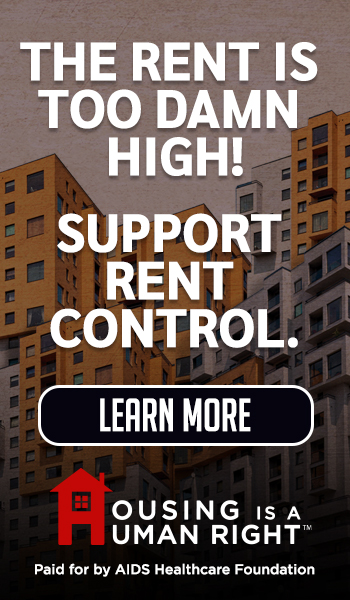Comments
iAUDIT! - When Measure A was on last November’s ballot, supporters put a lot of effort into assuring the public the money would be spent only on programs that were effective, and an independent board would monitor performance. Supporters published slick mailers with words like “accountability” , “performance-based metrics” and “independent oversight” to convince voters things would be different this time, and revenue would be used more responsibly than it had under Measures H and HHH.
However, a review of the people and policies guiding Measure A’s revenue tells a different story. An April 23 LA Times article described the complex network of committees that will determine how revenues from Measure A and ULA will be used. . If you were expecting independent oversight of the money, you'll be disappointed. I encourage you to follow the links in the article to see who will be managing the billion dollars estimated to be generated by Measure A and other measures. Just looking at Measure A, authority rests with an Executive Committee made up of elected officials from all over LA County. None of them have expertise in homelessness nor performance management. The real center of policy making will likely rest with a 29-member Leadership Table for Regional Homeless Alignment (LTRHA) whose members were handpicked by just two people: Miguel Santana, chief of the California Community Foundation, Measure A's main backer and a multimillion dollar YIMBY nonprofit, and Peter Laugharn, President and CEO of the Conrad N. Hilton Foundation, which also supported the measure. No community input was allowed on who will be deciding how to use the money. Most of the LTRHA's membership will be made up of the same people who support the current failed system: corporate nonprofit executives, labor unions, and managers or employees of the same City, County, and LAHSA departments that have already wasted hundreds of millions of dollars. Even the three business community members are a disappointment. There's a member from the Hospital Association of Southern California, but he's a lawyer, not a doctor trained in mental health or addiction services.
Let’s take a closer look at Leadership Table’s mission and members. An October 18, 2024 agenda for the Leadership’s Table is informative. The slides on performance metrics are especially interesting. For example, Slide 27 shows the goal for reducing the number of homeless people with mental illness or substance abuse problems. Note the goals is to “reduce by XX% the number of homeless with mental illness and/or substance abuse problems”. “XX” is not a number. This meeting took place on October 18, less than a month before the November election, and despite assurances of robust performance measurement, the committee had yet to identify a solid metric for this goal. If you read the entire presentation, you will find five instances of “XX%” for:
· Moving people from encampments to permanent housing
· Reducing the number of homeless people with mental illness and substance use disorders
· Increasing the number of people permanently leaving homelessness
· Preventing [pe[;e from becoming homeless
· Increasing the number of affordable housing units in LA County.
So, less than a month before the election, and despite a slick PR campaign full of reassuring words about robust performance measures, the Leadership Table had yet to set metrics for its most important programs. That should have been the first thing the committee did, so it could build programs aimed at achieving those goals. In fact, the metrics weren’t completed until recently, almost ix months after the election. And, assuming the LA Times report on those metrics is correct, they are five-year goals with no milestones in the years in between.
A review the Leadership Table’s membership on slides 14 and 15 may explain the lack of solid goals. It’s a who’s who of entrenched special interests in the current homelessness network. A few examples include:
1. Stephanie Klasky-Garner, CEO of LA Family Housing, one of the larger corporate nonprofits benefiting from Measure A’s revenue. Its most recent tax filing shows LA Family Housing had more than $71 million in revenue in 2023. Ms. Klasky-Garner makes about $329,000 per year as CEO, and at least six senior managers make over $200,000. LA Family Housing is infamous for managing an interim housing shelter in North Hollywood notorious for drug use and crime. In addition, Zachary Warma, Councilmember Yaroslavsky’s Director of Homelessness, is a former senior manager at LAFH, and was instrumental in directing a no-bid contract with the nonprofit for operating a proposed shelter in the Pico-Midvale area.
2. Dr. Lisa Wong, Director of LA County’s Mental Health Department. According to a report I helped prepare for the LA Alliance for Human Rights, her department has habitually left more than 30 percent of state mental health funds unspent every year. An independent audit ordered by the federal court determined the County chronically underserves unhoused people in need of mental health services. The Alliance and independent audit reports were supported by a survey sponsored by a collation of advocate groups that found more the 70 percent of Inside Safe clients have received no mental health services, despite an incidence of mental illness as high as 60 percent among the unhoused.
3. Lourdes Castro-Ramierz, the City’s Chief of Housing and Homelessness, who stated only “relentless outreach” can bring the unhoused into shelter, thereby giving providers free license to bill for limitless outreach contacts.
4. Dr. Barbabra Ferrer, the Director of LA County’s Department of Public Health. An ardent Harm Reduction advocate, Dr. Ferrer has repeatedly defended its policies in public meetings, citing scientific studies, which she never seem able to produce. At an April 2024 meeting, Dr. Ferrer repeated her claims of Harm Reductions’ success, but when she was asked to produce reliable statistics to support those claims, she backtracked and said “you have to look at trendlines” without offering any context on what that meant. As described in the All Aspect report by Christipher LeGras, the County’s version of Harm Reduction consists of distributing drug paraphernalia while offering no recovery services.
5. Anne Sewill, former General Manager of the City of LA’s Housing Department. Under her leadership, the department was unable to fil the infamous Hotel Cecil years after it became a homeless housing facility.
The remainder of the Leadership Table’s members are from similar backgrounds: nonprofits, public sector homelessness and housing officials, and a smattering of private sector executives with no direct homelessness experience. What you won’t see is 1) a medical professional with expertise in mental health or substance abuse, and 2) anyone with a background in performance measurement or managing for results.
In other words, despite all the talk about accountability and new directions and bold action, the hundreds of millions of dollars that are about to pour into homelessness program budgets will be overseen by the entities and executives who have chronically mismanaged current programs and wasted billions of dollars. To say the foxes are guarding the henhouse would be a gross understatement. Without some kind of outside authority forcing reform, we can expect more failure and more waste, just on a much grander scale.
(Tim Campbell is a resident of Westchester who spent a career in the public service and managed a municipal performance audit program. He focuses on outcomes instead of process in his iAUDIT! column for CityWatchLA.)






